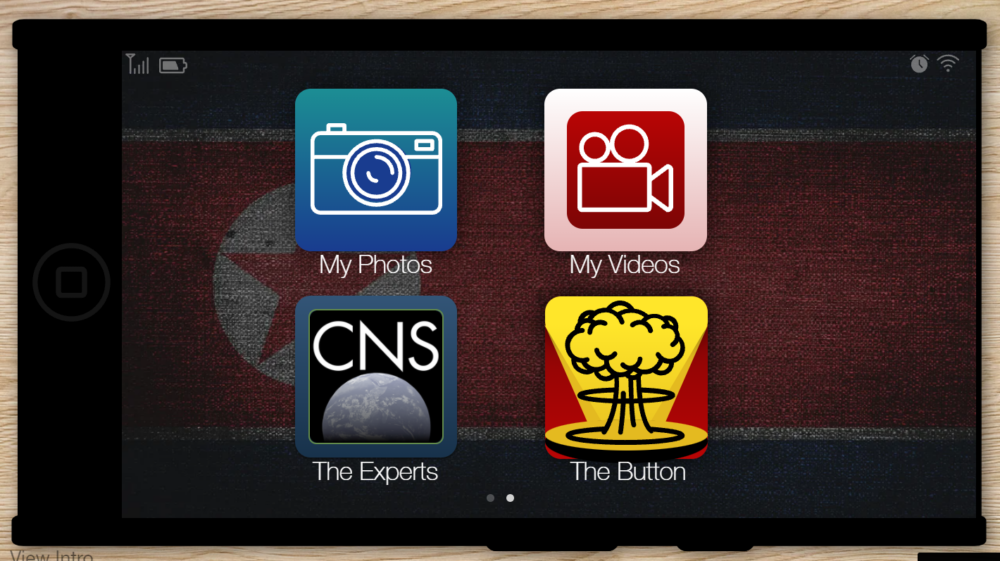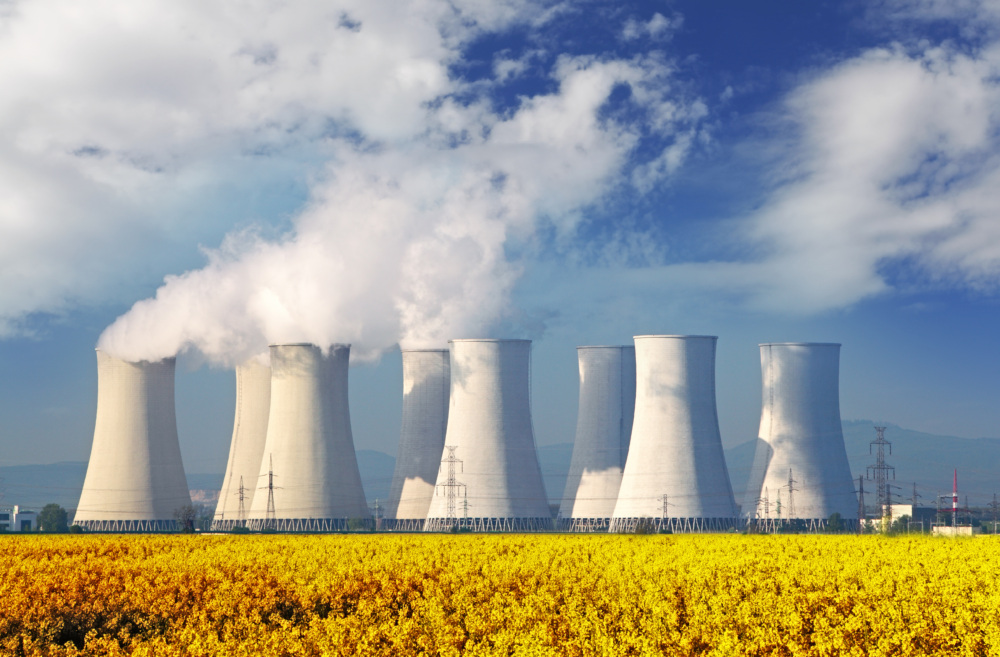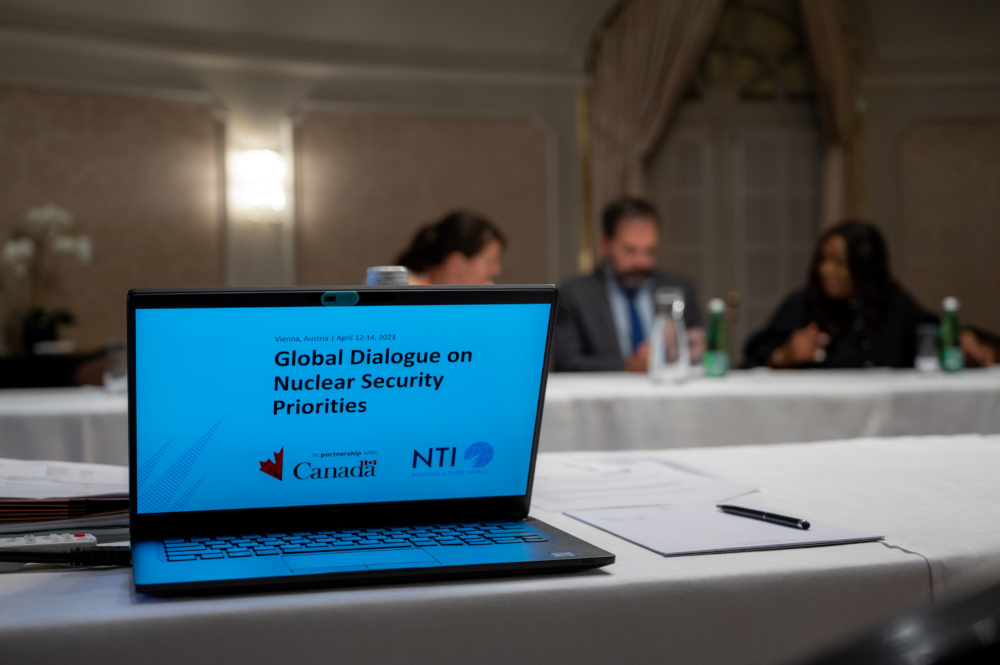
Jeffrey Lewis
Director of the East Asia Nonproliferation Program, The James Martin Center for Nonproliferation Studies
Photographs in state media are an indispensable source of information when it comes to a closed country like North Korea. But often, these photographs are manipulated or censored. In some cases, manipulations are purely cosmetic, such as the strange period that North Korea spent making Kim Jong Un’s ears smaller. 1 In other cases, the images are outright fabrications—including one case in which a missile was digitally added to an image. 2
Detecting alterations is partly about spotting fakes. But on a more basic level, it is about understanding propaganda. What does the North Korean government want the world to believe and what does it want to keep secret? In these cases, lies often tell us more than the truth; by looking at what North Korea attempts to hide, we can sometimes glimpse what truly worries North Korean leaders.
One item that North Korea takes great care to censor is Kim Jong Un’s smart phone. Although state media has released images of the phone, the way it does so suggests an unusual amount of concern.
North Korea is not unique in this regard. When Barack Obama entered office, he was reluctant to abandon his smartphone. The U.S. National Security Agency (NSA) created a secure Blackberry for him. And like North Korea, the United States treats this as a secret; the NSA refused to confirm any details about the device, such as whether Obama could use it for texting or email. A retired NSA official did confirm, however, that there were no games on the phone. Obama could make the call to launch nuclear weapons – but not to play Angry Birds.
Despite the reputation of North Korea as isolated and backward, there is significant private ownership of mobile phones, including smartphones, inside the country. Reliable statistics are hard to come by, but most estimates suggest that there are several million smartphones in North Korea. 3 State media has shown Kim Jong Un visiting smartphone factories.
These phones use a network, Koryolink, that is operated by a Joint Venture between Egypt’s Orascom and the state-owned Korea Post and Telecommunications Corporation. This network is designed to carefully control the access it provides to users. Users can see that there are two channels, one for locals and one for foreigners.
But there is a third channel, for special users. 4 According to a former director of Koryolink, Ahmed El-Noamany, North Korea’s leadership uses this third channel on the network for sensitive communications. According to El-Noamany, North Korean leaders rely on this network because sanctions have made it difficult for North Korea to acquire the technology to encrypt communications.
Reporting has also suggested that North Korea has worked hard to improve encryption for “special users,” working with two Chinese companies, including Huawei, to deploy a domestic encryption system on the network. 5
Of course, of all the special users, one is more special than the rest: Kim Jong Un.
North Korea has released images of Kim’s phone, although these have generally been poor resolution images. (Interact with the photos discussed in this section, including using special software filters, using the “Kim’s Phone” interactive above).
The outside world did not get a glimpse of Kim’s cellphone until January 2013, when North Korea released images of Kim Jong Un ordering a nuclear test. In just one of those images, sitting next to a stack of papers, there was a small black smartphone.
The object is hard to see—but even so, this glimpse prompted a flurry of speculation. What sort of cellphone was it? Some observers suggested it looked like a Samsung, a potentially embarrassing purchase from the capitalist South. A company spokesperson, however, denied it, and instead pointed to Taiwanese manufacturer HTC. Given the resolution, outside experts were simply guessing. North Korea did not release another image of Kim Jong Un’s smartphone for more than six years.
And then 2019 arrived.
On May 9, 2019, North Korean state media showed Kim Jong Un at the second firing of a new short-range ballistic missile. North Korea released two high-resolution images of Kim sitting at a desk, his phone on the table in front of him. These are the only two high-resolution images that North Korea has ever released in which the phone was visible. In both images the phone was severely blurred, preventing any identification. We assessed the images in Tungstène, a digital forensics software, to examine whether the blurring was deliberate or an issue of focus. Someone had gone out of his or her way to hide the phone, underscoring the sensitivity of the object.
Kim’s smartphone has been seen again since these two images were released—but only in low resolution images. Kim’s phone was seen on four different occasions in mid- to late-2019. For example, the cell phone was shown in four images after a July 31, 2019 missile test. But these images were not released, only broadcast on television in low-resolution. Similarly, the phone appeared in a single image after an August 2, 2019 missile test, but only as a low-resolution image published by Rodong Sinmun. The phone also appeared on August 24, 2019, but out of focus, and again on September 19, face down. Kim’s phone has not been visible in any of the missile tests conducted in 2020—although it may be present in one high-resolution photo—from March 21, 2020 (placed discretely behind a clear ash tray).
There are different reasons that Kim might be sensitive about the details of his smart phone. Some have naturally speculated that perhaps the phone is of foreign manufacture and that North Korea was eager to avoid the embarrassing speculation of 2013.
Another possibility is that the phone is domestically manufactured—but is used for sensitive communications. This would suggest that North Korean censors are comfortable with outsiders knowing that Kim Jong Un uses a smartphone but uncomfortable with details or high-resolution images that might compromise security.
The idea that Kim Jong Un might rely on his smart phone for crisis communications is disconcerting. Cellular networks are notoriously undependable during crises because they tend to be overwhelmed by calls and text messages from worried individuals. There were widespread cellular service outages after both the September 11, 2001 terrorist attacks and the 2013 Boston Marathon bombing, where cellular networks were overwhelmed and emergency responders had to depend on radio communications. 6 If North Korean leaders rely on the country’s cellular network for crisis communications, there is a real chance of interruptions in network service during a crisis, and they might be misinterpreted as a cyberattack against North Korea’s nuclear forces. While North Korean “special users” have their own dedicated channel, it appears to operate on the same network infrastructure, using the same towers and the same base stations. If one network goes down, the whole system might fail or become unreliable. Surprising things can happen.
One hopes that Kim Jong Un would understand that it was a network problem and not the beginning of an attack causing his communications outage—but nuclear command-and-control should not rely on hope. After the terrorist attacks on the United States on September 11, 2001, President Bush was evacuated on Air Force One. The pilot flew at an unusually high altitude as a safety measure, something that unexpectedly interfered with communications channels. Some officials briefly worried that their inability to communicate was the result of sabotage. “I won’t lie,” the superintendent of communications on Air Force One later admitted, “It crossed my mind that somehow somebody had gotten to the system aboard Air Force One.” 7
Recently, there was an outcry after it was revealed that Huawei and another Chinese company had helped North Korea deploy encryption on its channel for special users on its cellular network. But we should be relieved, not worried about Kim having confidence in his communications. In peacetime, a Kim Jong Un who believes his cell phone is vulnerable to cyberattack might very well delegate the authority to use nuclear weapons to lower level commanders. And in a crisis, he might very well feel he needed to order the use of nuclear weapons to prevent a US invasion before his communications are cut off. The logic of strategic stability would suggest that nuclear-armed adversaries are both safer when their respective leaders feel like they can wait to make a fateful decision.
Sign up for our newsletter to get the latest on nuclear and biological threats.
To make good on their COP28 pledge, countries need a new approach to building, regulating, and financing nuclear technology.
Lessons Learned from 10 Years of the Global Dialogue on Nuclear Security Priorities
The NTI Index is recognized as the premier resource and tool for evaluating global nuclear and radiological security.



